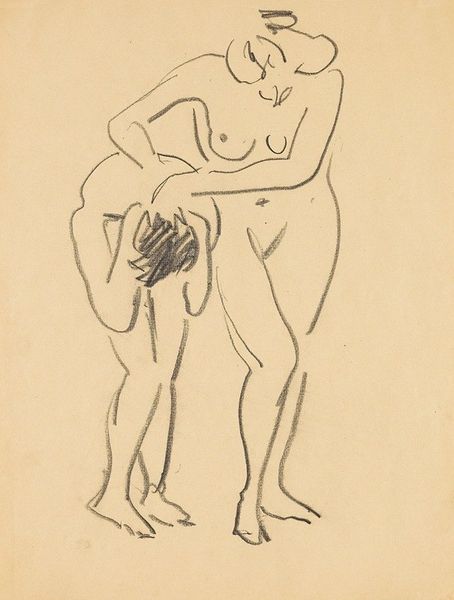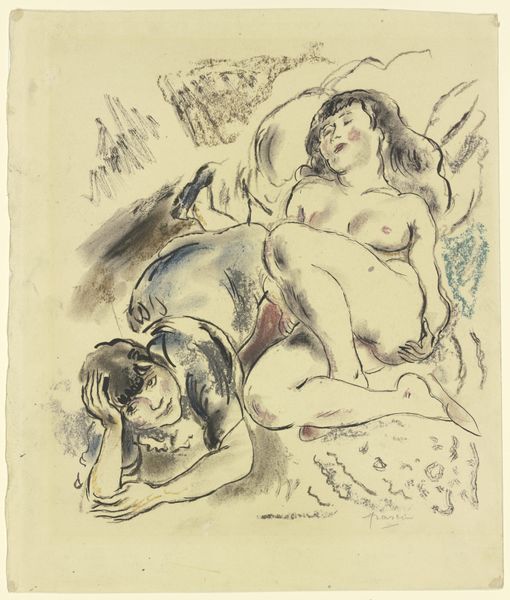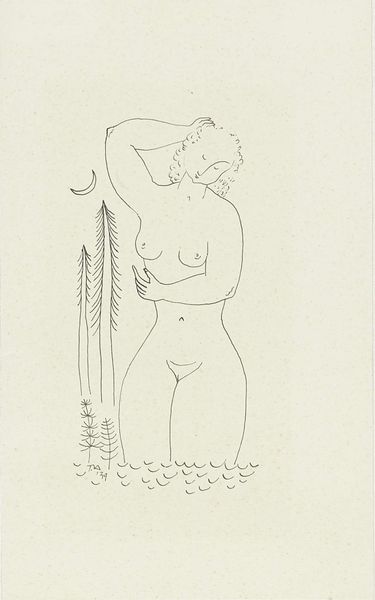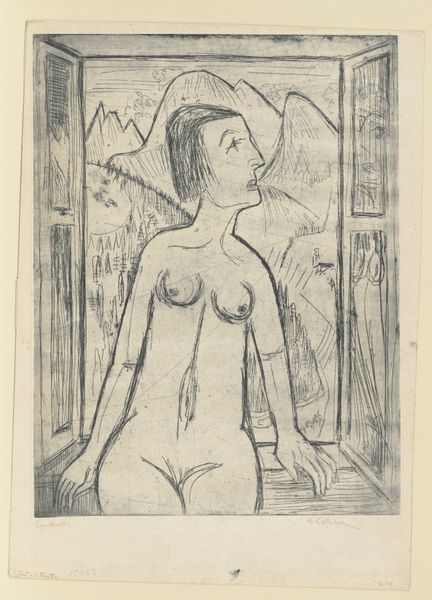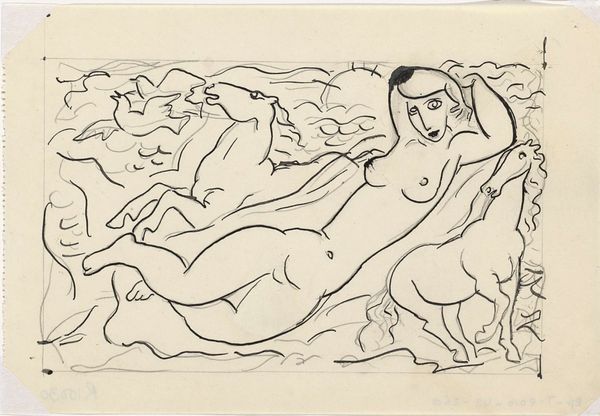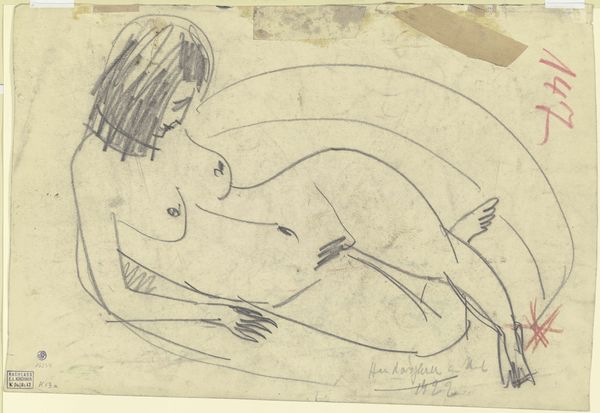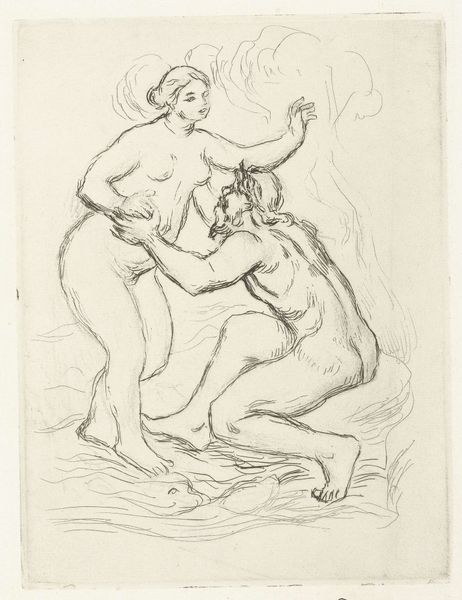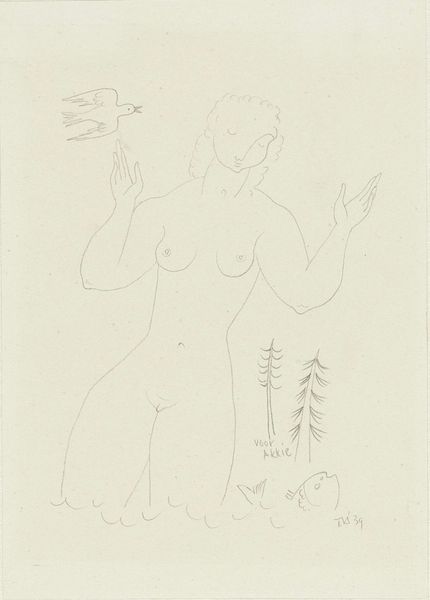
drawing, painting, watercolor
#
portrait
#
drawing
#
painting
#
caricature
#
figuration
#
abstract
#
watercolor
#
genre-painting
#
modernism
Copyright: Public Domain: Artvee
Editor: So, here we have "Slovak Mother," a painting, or maybe a drawing, from sometime between 1920 and 1930 by Mikuláš Galanda. I'm immediately struck by its simplicity and tenderness – it feels very intimate, almost like a snapshot of a fleeting moment. What do you see in this piece, particularly regarding the way Galanda uses symbolism? Curator: This image certainly resonates with the archetypal figure of the nurturing mother, a universal symbol. Galanda presents us not just with a woman and her children, but with a representation of the life-giving force itself. Consider the exposed breast: what could that symbolize, given the artist’s time and place? Editor: Well, obviously, it's a symbol of nourishment, of life. But I'm also wondering if it might be making a statement about the role of women and how they were perceived at that time. Curator: Precisely! It's a powerful declaration of maternal strength, drawing upon deep cultural memories of the Earth Mother. Think about how often the breast is represented, sometimes hidden, sometimes boldly, in artworks across centuries and cultures, from ancient fertility figures to Renaissance Madonnas. Do you feel a sense of continuity in this symbol? Editor: Absolutely. I see that connection. It’s like Galanda is tapping into something timeless about motherhood. The figures almost appear outside of time and space, too – there's very little to indicate where they are in the world. Curator: Yes, notice the simplification of forms, bordering on abstraction. The landscape becomes a backdrop, secondary to the emotional weight of the central figures. This simplification isn’t merely aesthetic; it allows the symbolic power of the image to rise to the surface, wouldn’t you agree? It focuses us on the universal, stripping away the extraneous. Editor: Definitely. I had noticed the simplification, but hadn't made the connection to its impact on symbolism. It's made me think about how artists can use that simplification to emphasize deeper meaning. Curator: Exactly! That’s a very astute observation and appreciation, well done!
Comments
No comments
Be the first to comment and join the conversation on the ultimate creative platform.




